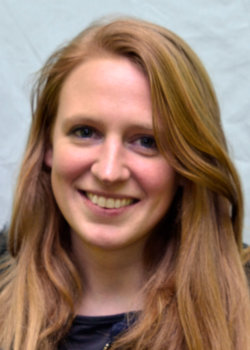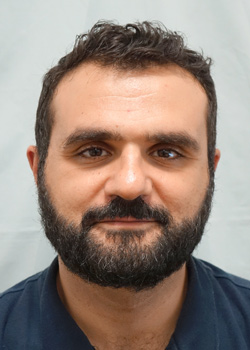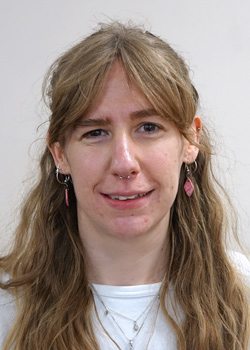Muon Experiments
In April 2021, the Fermilab Muon g-2 experiment announced a new measurement of the magnetic moment of the muon. This result confirmed an earlier result from Brookhaven Lab, and took the disagreement with the Standard Model to 4.2 standard deviations, and could be the sign of a major new discovery. Ongoing analysis will confirm this. You can see the announcement on the Fermilab YouTube channel, where you can also see another video explaining the result. Jorge Cham has also illustrated the results in an easy to follow set of cartoons. Our work on Muon g-2 is part of a larger Muon Physics programme.

At the LHC experiments, ATLAS and CMS, evidence for new particles and interactions beyond the Standard Model (BSM) is being sought by looking for the direct production of new particles. Such searches are limited by the LHC beam energy and present limits on Supersymmetry (SUSY) extend to masses of approximately 1.5 TeV.
An alternative approach is to exploit the uncertainty principle and look for the effect of virtual particles which potentially allows much higher mass scales to be probed. In the quark sector this is being pursued by LHCb and NA62 and in the charged lepton sector this is being pursued by two different types of muon experiment.
The first is to measure a quantity that is very precisely predicted in the SM and look for a deviation in the value. This is the strategy behind the Fermilab Muon g-2 experiment, where we now observe a deviation of 4.2 standard deviations based on first data. The final aim of the experiment is the world's most precise measurement at a particle accelerator: determining the muon's magnetic moment with a precision of 0.14 parts per million. Ongoing analysis will enable us to confirm whether we the current results are indeed a major discovery of new physics.
The second is seeking to see neutrinoless decays of the muon which only occur at an unobservable rate (O(10-50) in the Standard Model (SM) such that any observation would be evidence of BSM physics. At UCL we are part of both the Fermilab Mu2e and PSI Mu3e experiments that are seeking to extend the search for charged lepton flavour violation by 4 orders of magnitude.
In certain classes of model these two measurements are closely related (see the above Feynman diagrams). For example in SUSY they both proceed through the exchange of a neutralino and both measurements are required to pin down the model parameters. The muon magnetic moment indicates the mass scale of the new physics whereas the muon to electron conversion is determined by both the mass scale and the slepton mixing. For large slepton mixing the muon to electron conversion process has a sensitivity to mass scales far beyond the LHC.
Group Members
Academic Staff and Advanced Fellows
| Name | Location | Phone | Email (@ucl.ac.uk) | Research Areas/Role | |
|---|---|---|---|---|---|
 | Prof. Gavin Hesketh | C22 Physics | +44 (0)20 7679 2739 | gavin.hesketh | Muons: Muon g-2, Mu3e |
 | Dr Rebecca Chislett | C14 Physics | +44 (0)20 7679 3498 | rebecca.chislett | Muons, Muon g-2, Mu2e |
 | Dr Alex Keshavarzi | D17B Physics | a.keshavarzi | Muons, Muon g-2, Mu2e, Particle Theory and Phenomenology, pEDM |
Research Staff
| Name | Location | Phone | Email (@ucl.ac.uk) | Research Areas/Role | |
|---|---|---|---|---|---|
 | Dr Mikio Sakurai | D25 Physics | m.sakurai | Muons: Muon g-2, Mu3e |
Computing, Engineering and Technical Staff
| Name | Location | Phone | Email (@ucl.ac.uk) | Research Areas/Role | |
|---|---|---|---|---|---|
 | Dr Erdem Motuk | D15 Physics | +44 (0)20 7679 3025 | h.motuk | ATLAS, DUNE, Muon g-2, Mu2e, Mu3e |
 | Matthew Warren | D15 Physics | +44 (0)20 7679 2135 | matthew.warren | ATLAS, ATLAS Upgrade, Muon g-2, Mu2e, Proton Therapy |
PhD Students
| Name | Location | Phone | Email (@ucl.ac.uk) | Research Areas/Role | |
|---|---|---|---|---|---|
 | Lucy Bailey | D25 Physics | lucy.bailey.21 | Muon g-2 |
Visitors and Emeriti
| Name | Location | Phone | Email (@ucl.ac.uk) | Research Areas/Role | |
|---|---|---|---|---|---|
 | Prof. Mark Lancaster | University of Manchester | +44 (0)161 306 3983 | mark.lancaster AT manchester.ac.uk | Muons, Muon g-2, Mu2e |
